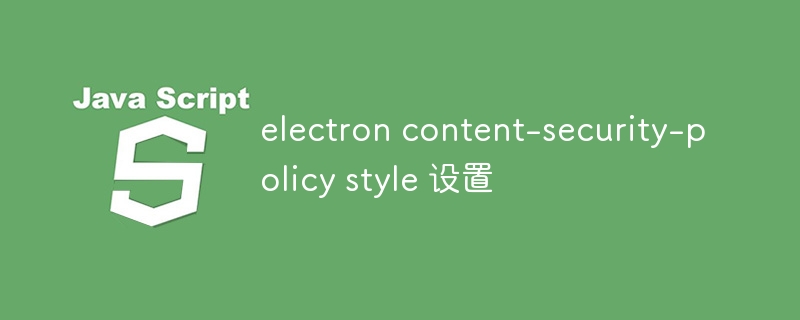이 문서에서는 개발자가 웹 기술을 사용하여 크로스 플랫폼 데스크톱 애플리케이션을 구축할 수 있는 애플리케이션 플랫폼인 Electron의 스타일에 대한 콘텐츠 보안 정책(CSP)을 구성하는 데 중점을 둡니다. 이 기사에서는 'el

Electron의 스타일에 대해 CSP를 구성하려면 electron을 사용할 수 있습니다. .session.defaultSession.webRequest.onHeadersReceived 이벤트. 이 이벤트는 요청의 헤더가 수신될 때 발생하므로 헤더가 서버로 전송되기 전에 헤더를 수정할 수 있습니다.electron.session.defaultSession.webRequest.onHeadersReceived event. This event is emitted when a request's headers are received, allowing you to modify the headers before they are sent to the server.
To add a CSP header to a request, you can use the setHeader method on the responseHeaders object. For example, the following code adds a CSP header to all requests:
electron.session.defaultSession.webRequest.onHeadersReceived((details, callback) => {
details.responseHeaders['Content-Security-Policy'] = 'default-src \'self\'; style-src \'self\' https://unpkg.com; img-src \'self\' https://unpkg.com https://example.com;'
callback({responseHeaders: details.responseHeaders});
});When setting up a CSP for styles in an Electron application, there are a few best practices to follow:
Electron's CSP for styles supports the following browser sources:
'self': This source represents the application's own origin.'unsafe-inline': This source allows inline styles to be executed.'unsafe-eval': This source allows inline scripts to be executed.'none'setHeader 메서드를 사용할 수 있습니다. responseHeaders 개체. 예를 들어 다음 코드는 모든 요청에 CSP 헤더를 추가합니다.'self': 이 소스는 애플리케이션 자체의 출처를 나타냅니다.🎜'unsafe-inline': 이 소스는 인라인 스타일이 실행되도록 허용합니다.🎜'none': 이 소스는 어떤 리소스 로드도 허용하지 않습니다.🎜🎜위 내용은 전자 콘텐츠 보안 정책 스타일 设置의 상세 내용입니다. 자세한 내용은 PHP 중국어 웹사이트의 기타 관련 기사를 참조하세요!